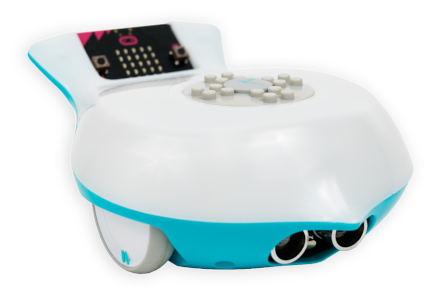Machine Learning, Magic Wands, and Robots
A workshop led by Tom Lauwers
When: |
Saturday, March 15 , 2025, 10:00 am to noon Eastern Time |
Where: |
Everywhere via Zoom |
Cost: |
$10 per person Free for people who participated in the 2024 Logo Summer Institute |
 |
In this workshop, we’ll get hands-on with Machine Learning to turn a wand magical. We’ll train a model to recognize different motions that we will make with a micro:bit that has been placed on the end of a wand. We’ll use that model along with the MakeCode blocks coding environment to command a second micro:bit, or a micro:bit-enabled robot, such as a Finch or a Hummingbird. In essence, by the end of the workshop we’ll have created a system where “swish-and-flick” really does cause some sort of reaction in the real world.
 |
 |
You may view this workshop as a presentation, but you may also
follow along hands-on. To do so you will need either 2 micro:
bits, or 1 micro:bit and either a Finch Robot, or a Hummingbird
Robotics Kit.
The Zoom session will be recorded. All registered participants
will have access to the recording for post-workshop review. If you
can’t attend the live session, you may register anyway to have
access to the recording. Not the same as being there, but valuable
nonetheless.
About Machine Learning
Arthur C Clarke’s third law states that any sufficiently advanced
technology is indistinguishable from magic. Modern computing
certainly seems magical in this sense, especially to anyone who
remembers Windows 3.1, punch cards, or difference engines. A large
part of the magic of our newest technology is powered by machine
learning, which is a method for transforming predictable, highly
efficient computing machines into overly emotional
conversationalists that have a hard time with simple math.
In all seriousness, while chatbots get much of the press, Machine
Learning (ML) has powered many of the most important computing
inventions of the last 15 years: In addition to text, image,
video, and music generators, ML also powers: 1. Recommendation
engines such as you encounter on Amazon, TikTok, or Netflix, 2.
Language translation systems, 3. Spam filters, 4. Face,
fingerprint, and other unlock methods for your phone or computer
customized to your biometrics, and much more. The (human) creators
of AlphaFold, an ML algorithm for identifying protein structure,
even won the Nobel prize in Chemistry in 2024. This, despite the
fact that none of them were chemists.
So, how does Machine Learning work? By examining a large number of
specific cases that are placed into categories, a computer program
can examine a new case to see which category it best fits into.
This identification can then be used by the program to take
action. With modern computing power, it’s possible to train a
model on a computer, and then place that model on something as
tiny as a micro:bit.
About the workshop leader:
Tom Lauwers founded BirdBrain Technologies in 2010 after receiving his doctorate in robotics from Carnegie Mellon University. His research was founded on engaging all students, regardless of background, in robotics and engineering. Tom seeks to design educational tools that catalyze positive making, coding, and engineering learning experiences in the classroom. Tom resides in Pittsburgh’s Squirrel Hill neighborhood with his wife, two kids, cat, and a small army of robots. He would be an invaluable ally in the event of a robot uprising.